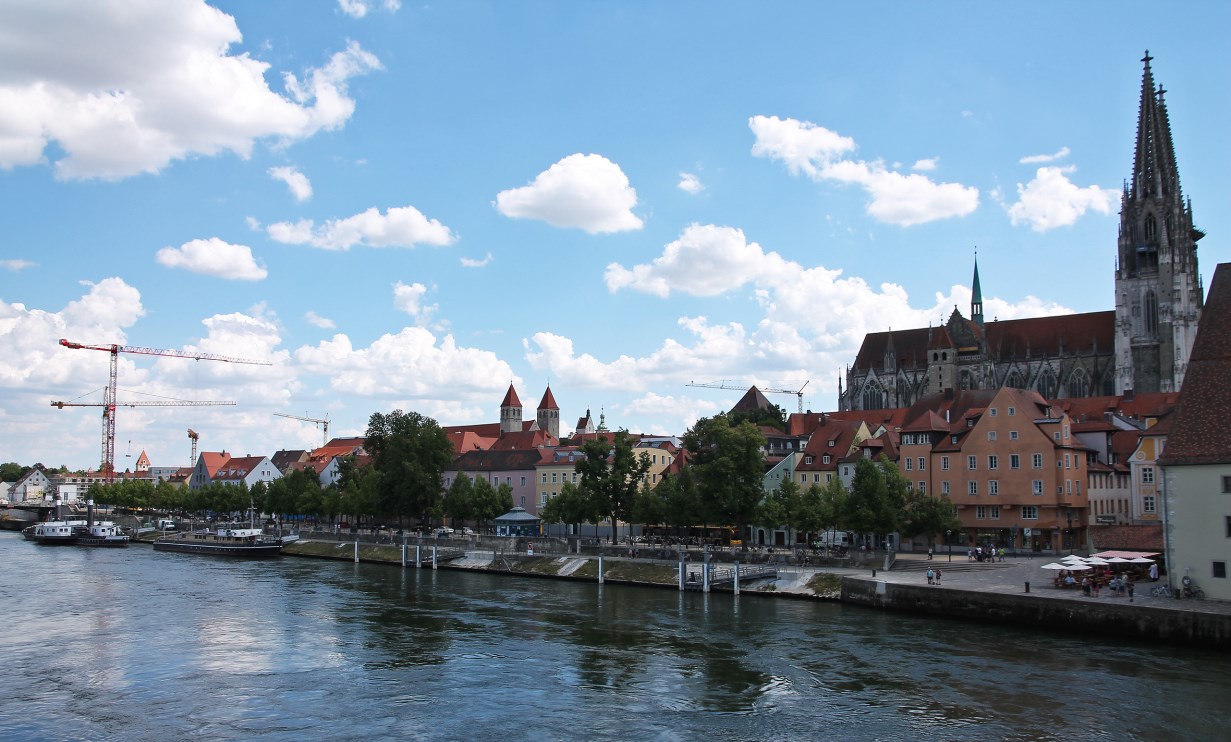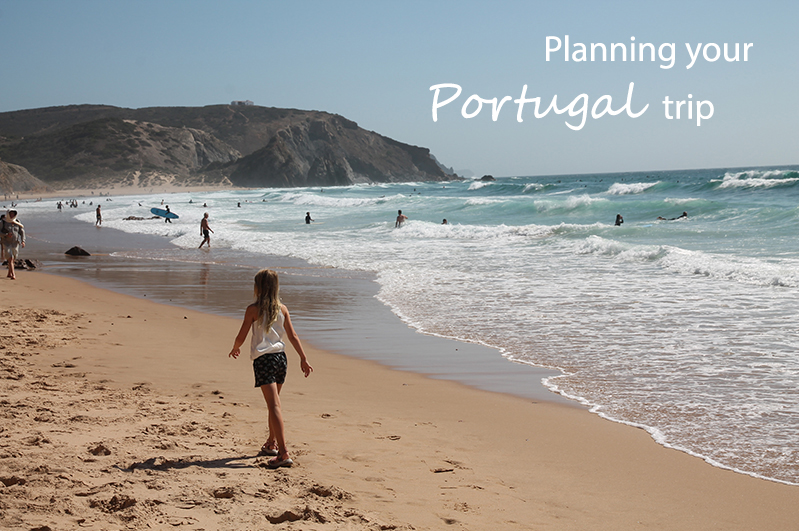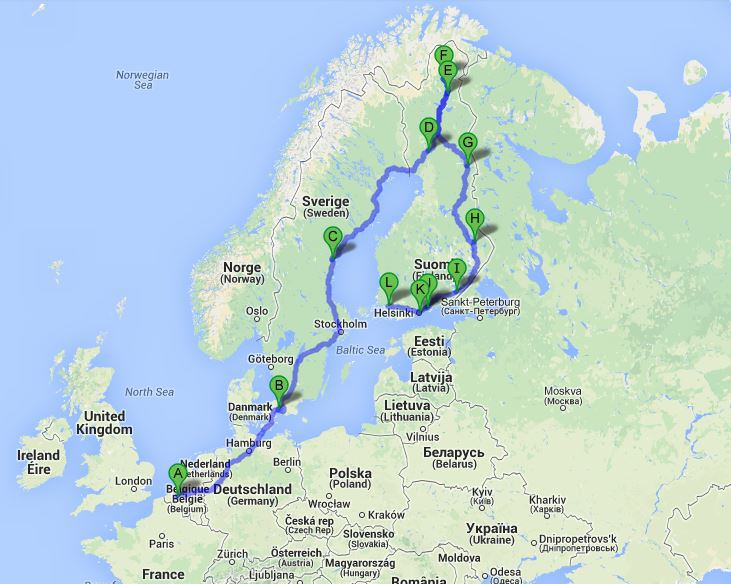If there is one thing we learned from our visit to Trier last year, it is that the Romans have been doing some serious construction and city-building in once-Germania. A considerable number of German cities still contain original and well-preserved Roman architecture. The Romans’ never-ending thirst for conquering new tribes and annexing new lands eventually led them into the northern lands of the Germanic tribes. Around the first and second century AD, the Roman Empire reached its largest expanse under emperor Traianus. At this time, the northern border of the Empire consisted of the Rhine and Danube river system. Along those rivers, a number of important forts and, later, cities, emerged. One of those was the fort Castra Regina, which evolved into a city later known as Regensburg.
Regensburg remained an important city under the reign of Charlemagne and was an important trading centre in medieval times. Although it adopted the Reformation, it was also an important Roman Catholic centre in those times. The importance of this city as a religious and commercial centre in the Middle Ages, and the fact that the medieval city centre remained nearly intact during WWII, lead to its designation as a UNESCO world heritage site in 2006.
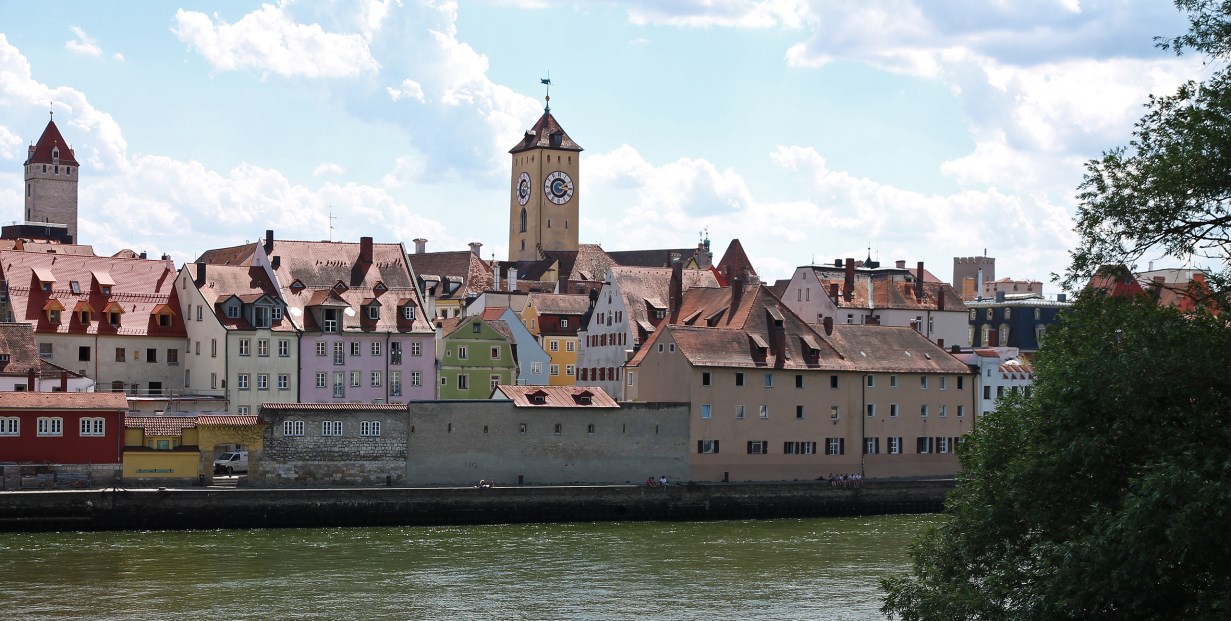
This is history. Now to the present. We had big plans with this city and had put quite some effort and research into it. Armed with a Google map on which we had highlighted our must-sees, we set off… Only to arrive in a city suffering under the scorching heat of mid-summer. And we suffered as well. So we armed ourselves with extra water supplies and attempted simply to survive this citytrip without withering…
A free parking space situated north of the city centre, in Stadtamhof (Am Protzenweiher), was our starting point. The Stadtamhof, especially the area around the former charity hospital St.-Katharina, is also part of the UNESCO heritage. It is an area of breweries, small streets and colourful houses. We crossed the Steinerne Brücke (Stone Bridge) over the Danube River towards the Old Town, undoubtedly the best spot for photos. The bridge was under construction at the time of our visit, which made our approach to the city a bit less charming.
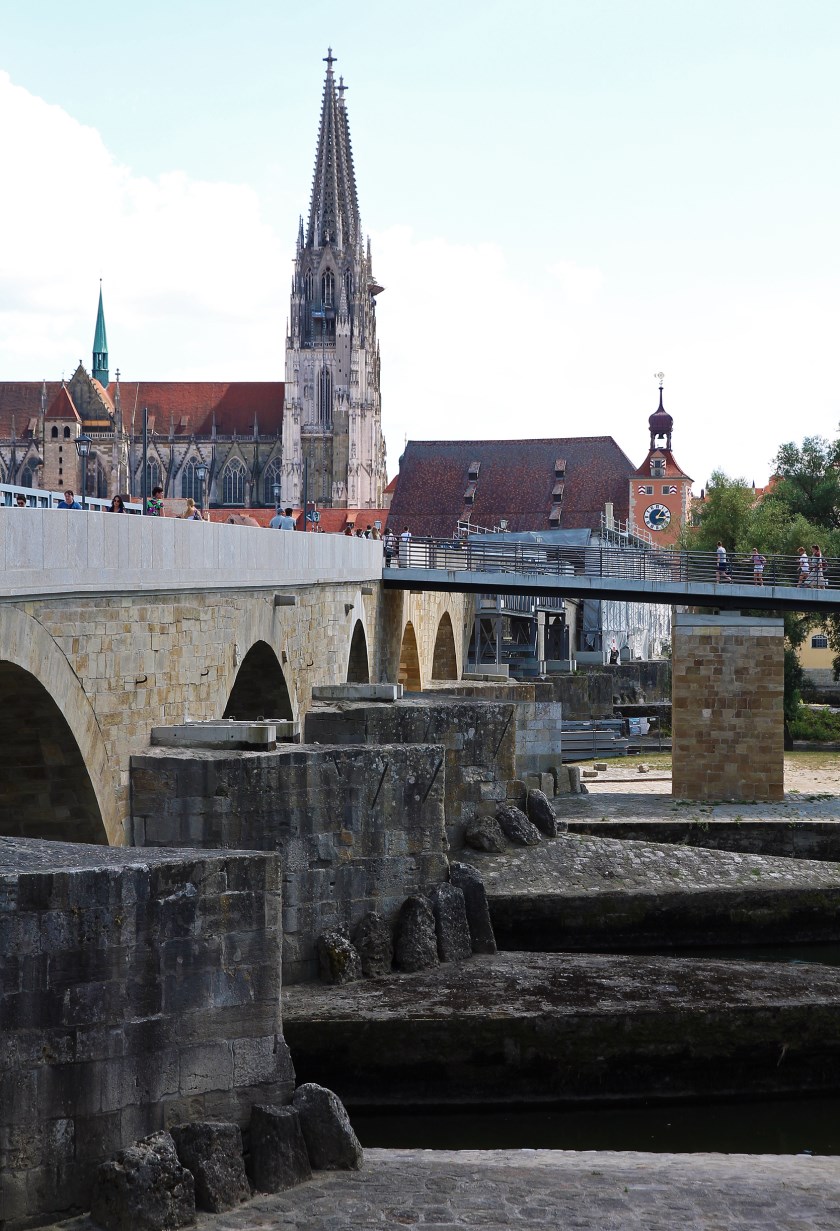
We reached the southern clocktower (the only remaining tower of the bridge), where we found some heat-relief through icecream. This was our gateway into the city. Due to the unfavourable weather conditions, we seriously shortened our visit. We spent the most of our time inside the gothic cathedral (Dom St.-Peter), where it was blissfully cool.

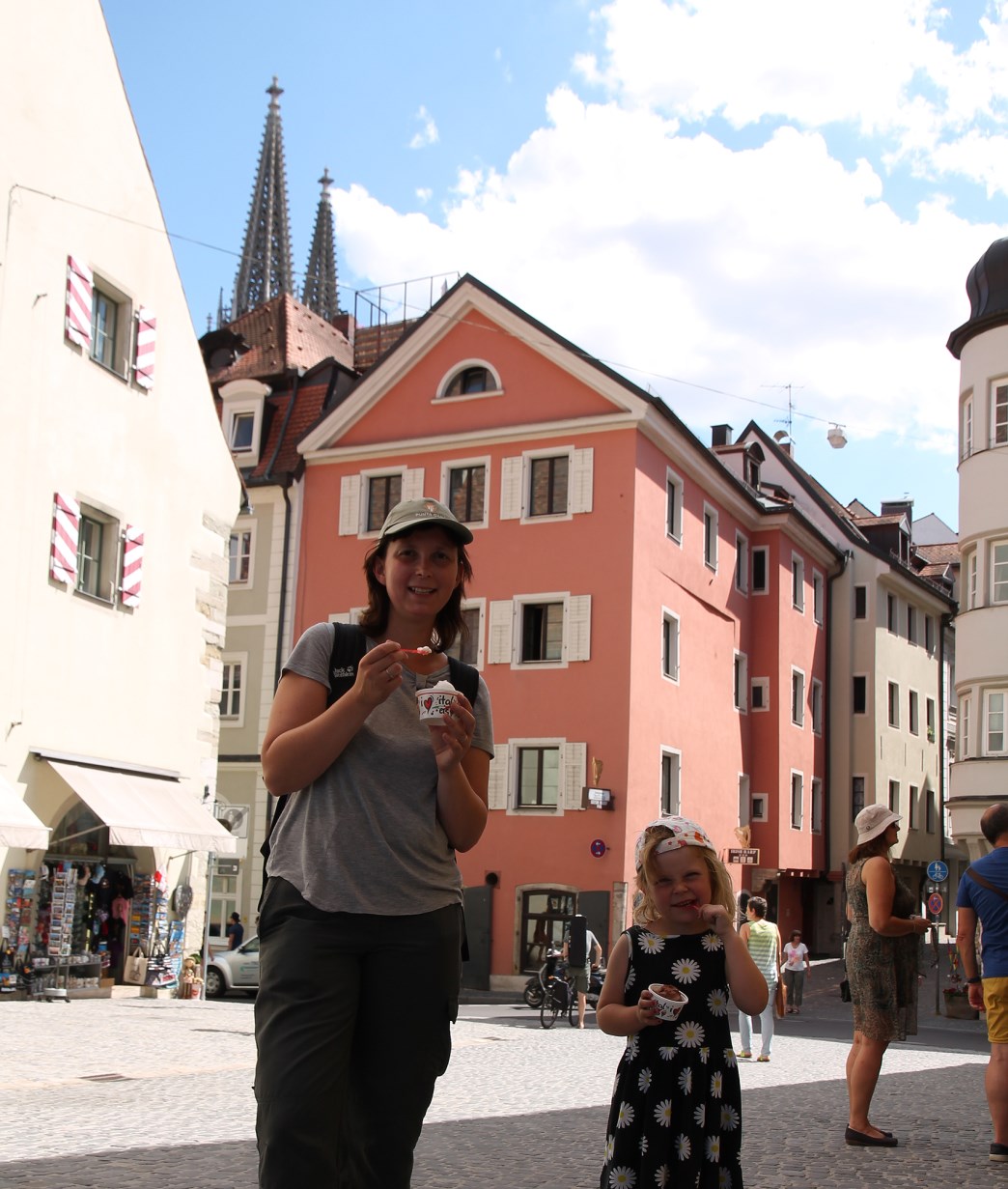
So, if you are in a hurry or the weather isn’t any good: here is a quick selection of what you can see within an hour or so…
1. The “Historische Wurstküche”, serving typical German sausages since the 12th century. Obviously a 100% no-go when it’s over 30°C if you ask us! (although the natives will probably argue that eating sausage is something you should do any day of the year…)
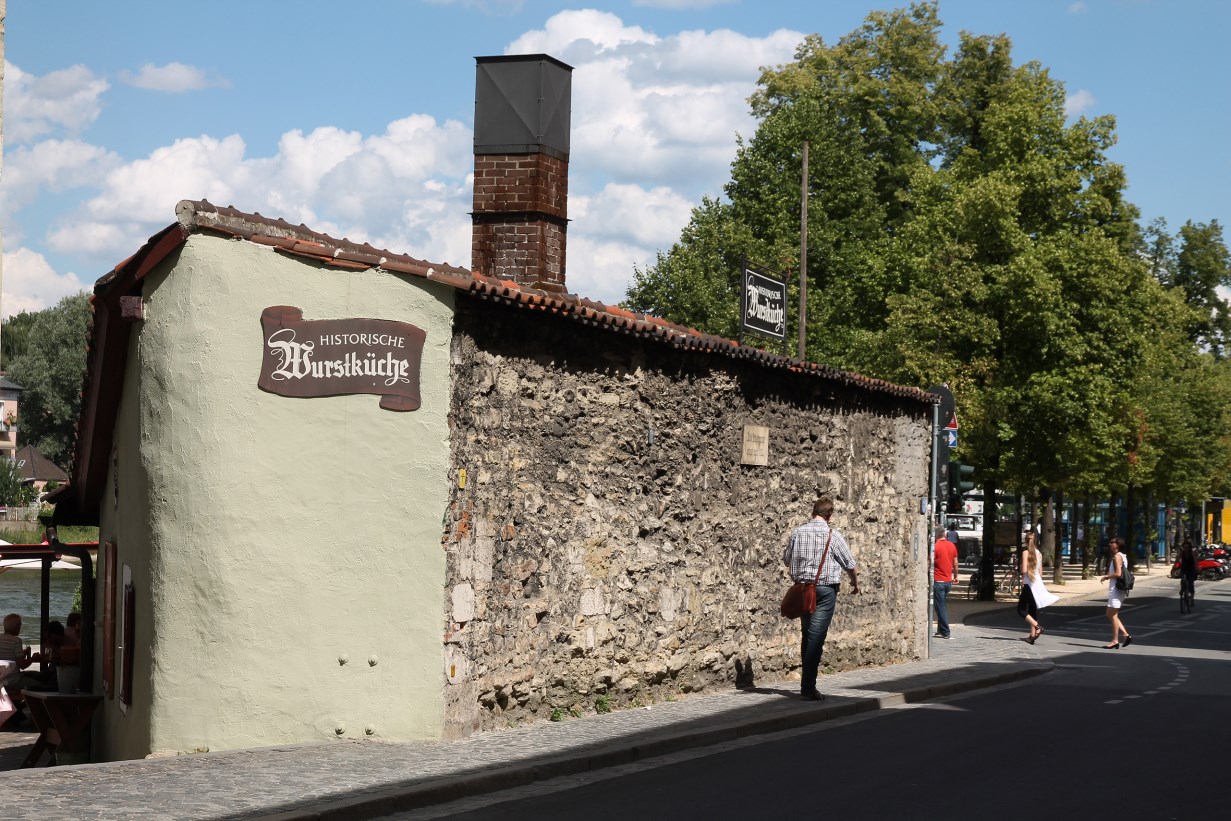
2. The Porta Praetoria, an arched gate that was part of the northern wall of the Roman military camp (Castra Regina), now incorporated in a modern building.

3. Regensburg cathedral. This church is well-known for its laughing figure of the angel Gabriel and 13th-14th century stained glass windows.
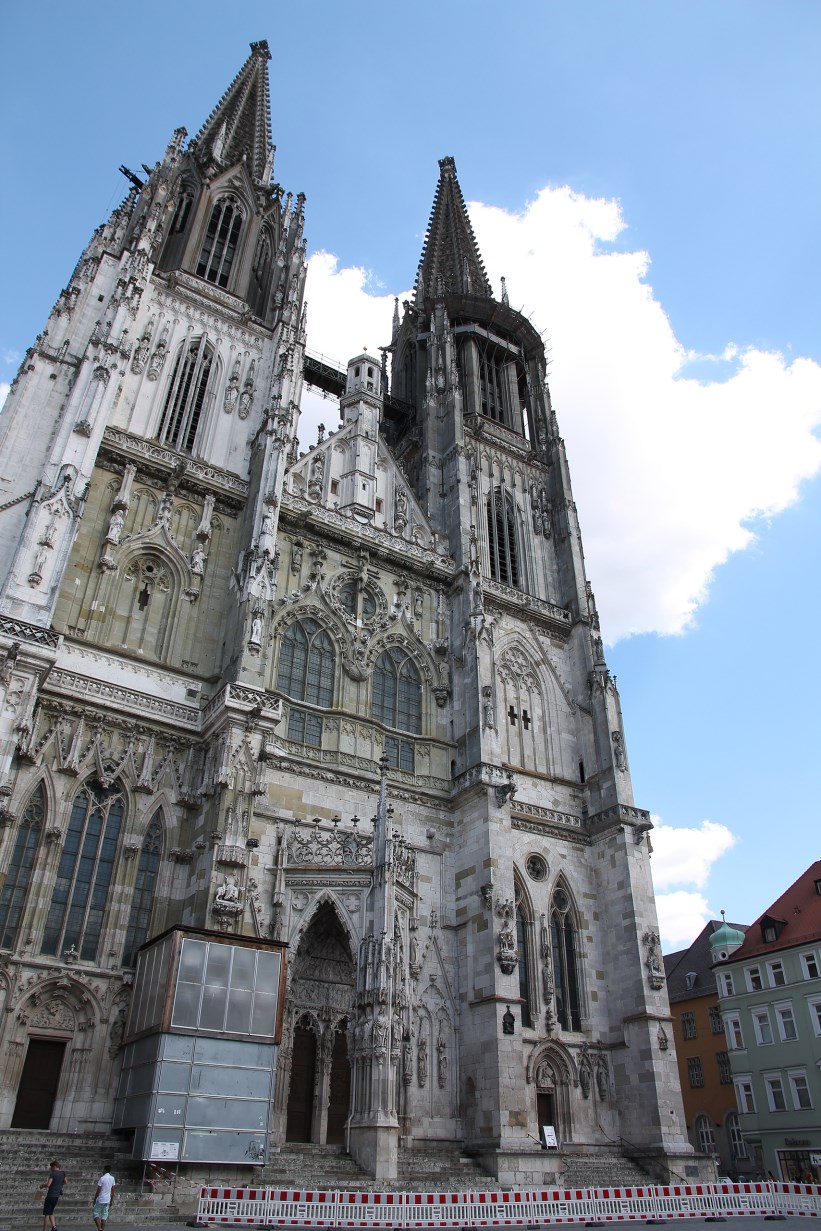
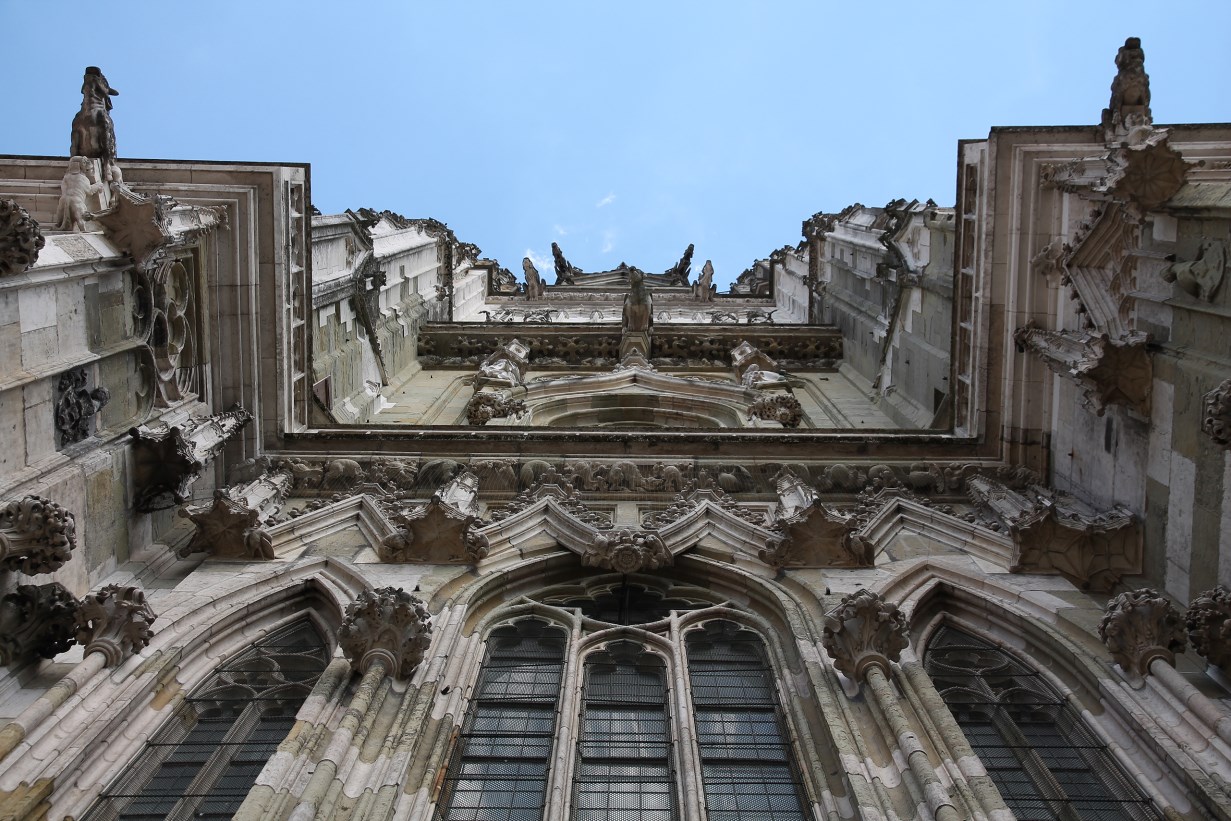
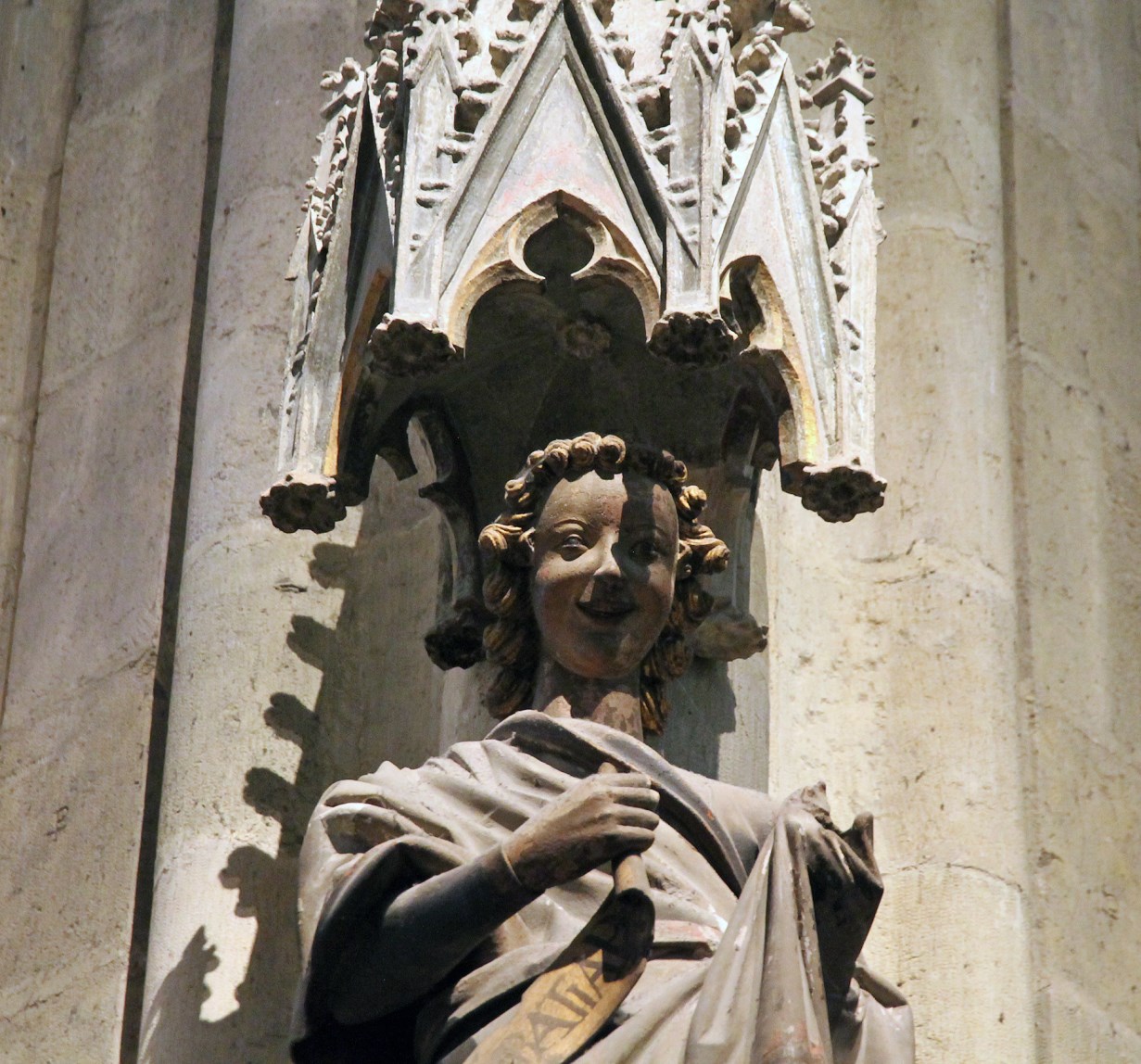

4. The old Corn Market (Kornmarkt) and its surrounding buildings, such as the Roman Tower (Römerturm) and the Duke’s Courtyard (Herzogshof).
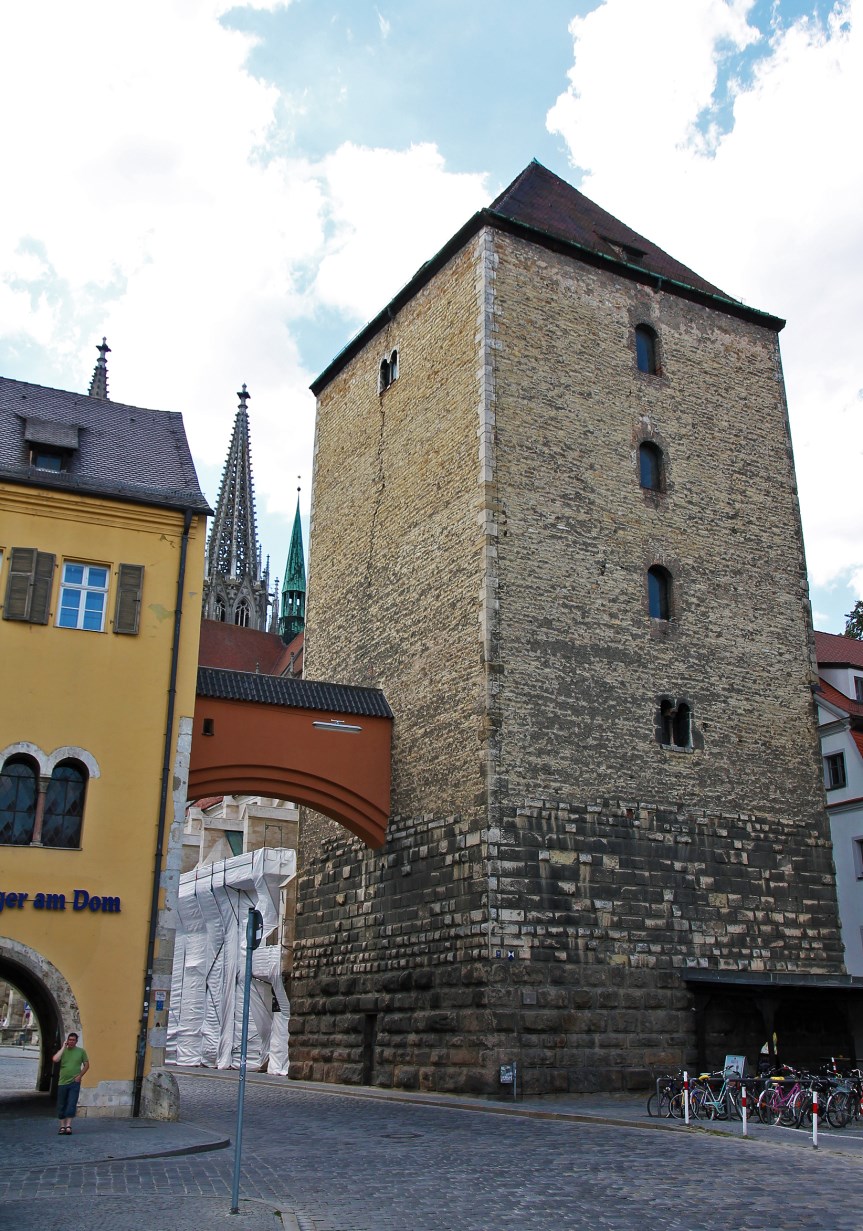

Just for the sake of completeness, I add our little Google map of highlights here. As you can see, the city has quite a bit of interesting places on offer. Moreover, I recently read a blog post about Regensburg, mentioning the Rococo “Alte Kapelle” (The Collegiate Church of Our Lady, the Old Chapel) as the most intriguing building in the city. We’ve seen this church at the Kornmarkt, but didn’t go inside. Maybe we should have…
We were staying at a campsite close to Regensburg, in the Naabtal, near the town of Pielenhofen. This small town is dominated by the beautiful Pielenhofen Abbey, a former Cistercian nunnery. Its Baroque church is well worth a visit when you are in the neighbourhood.
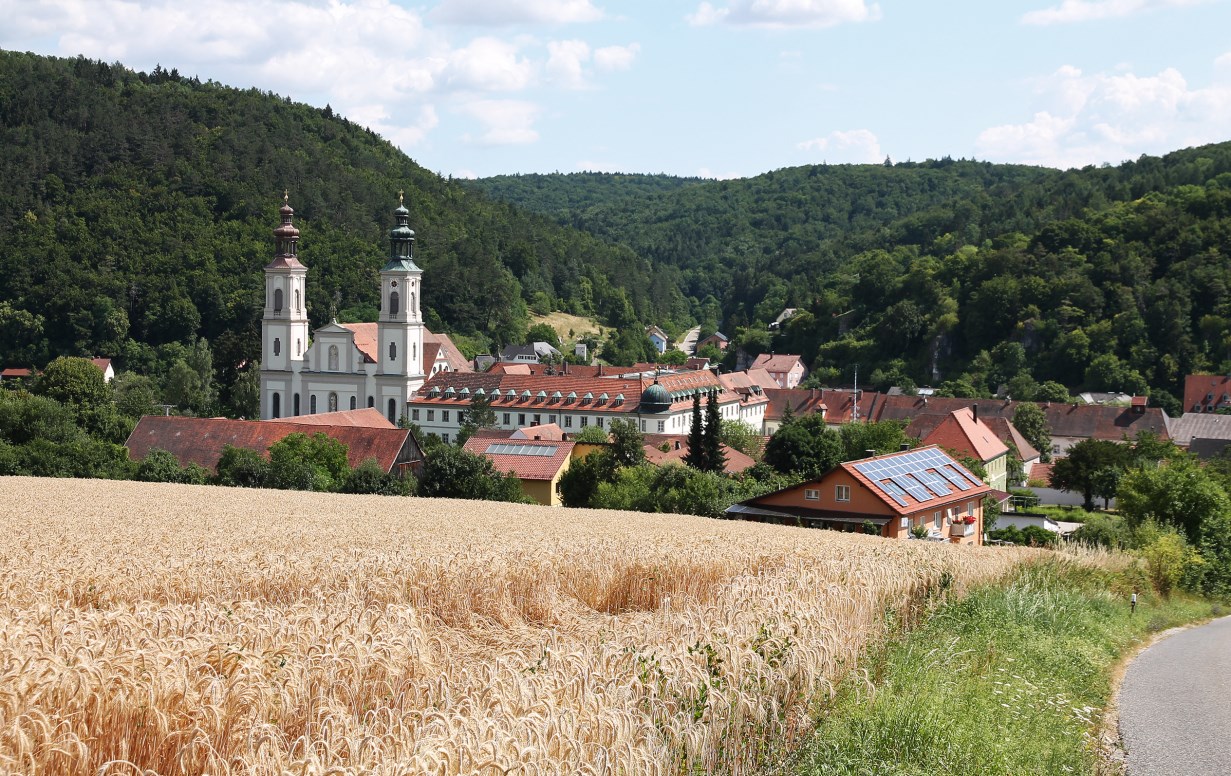
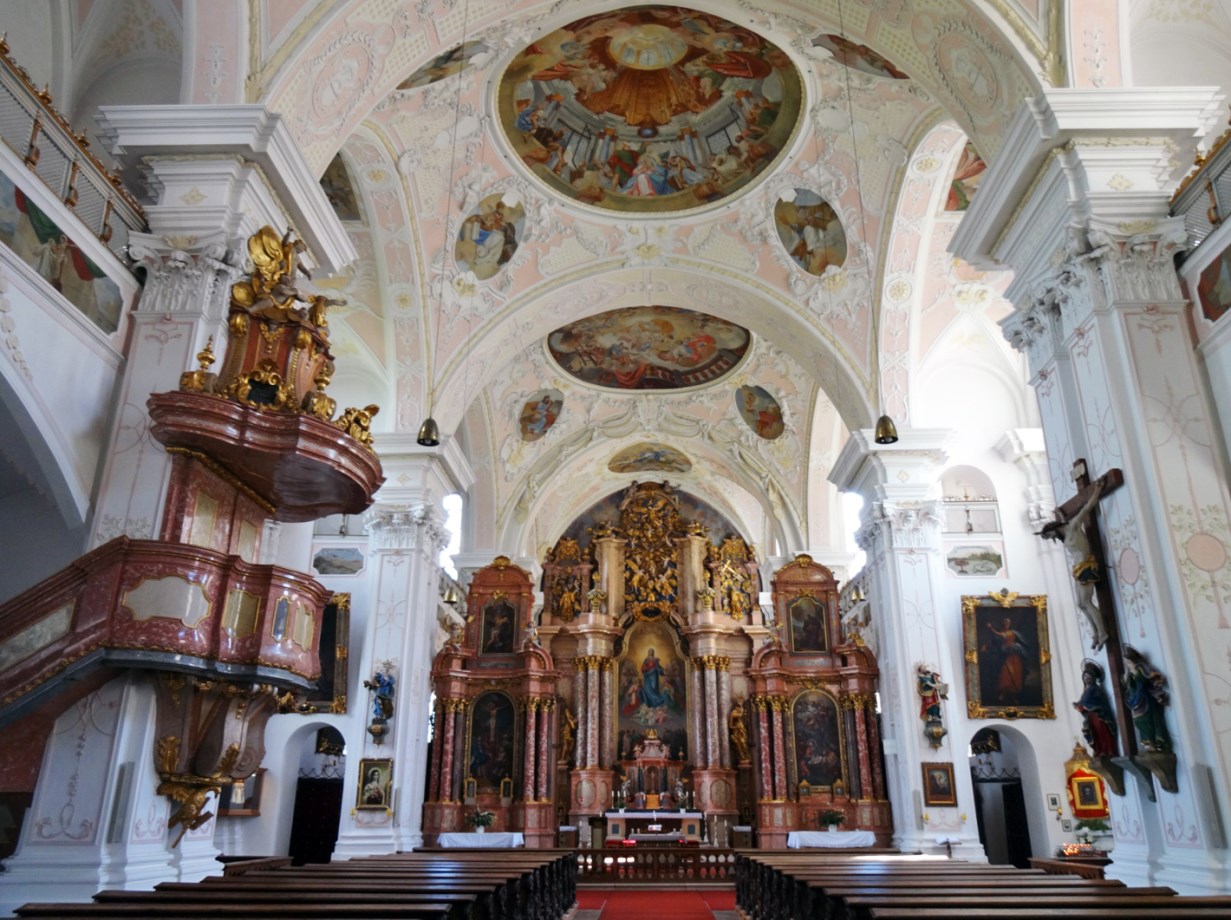
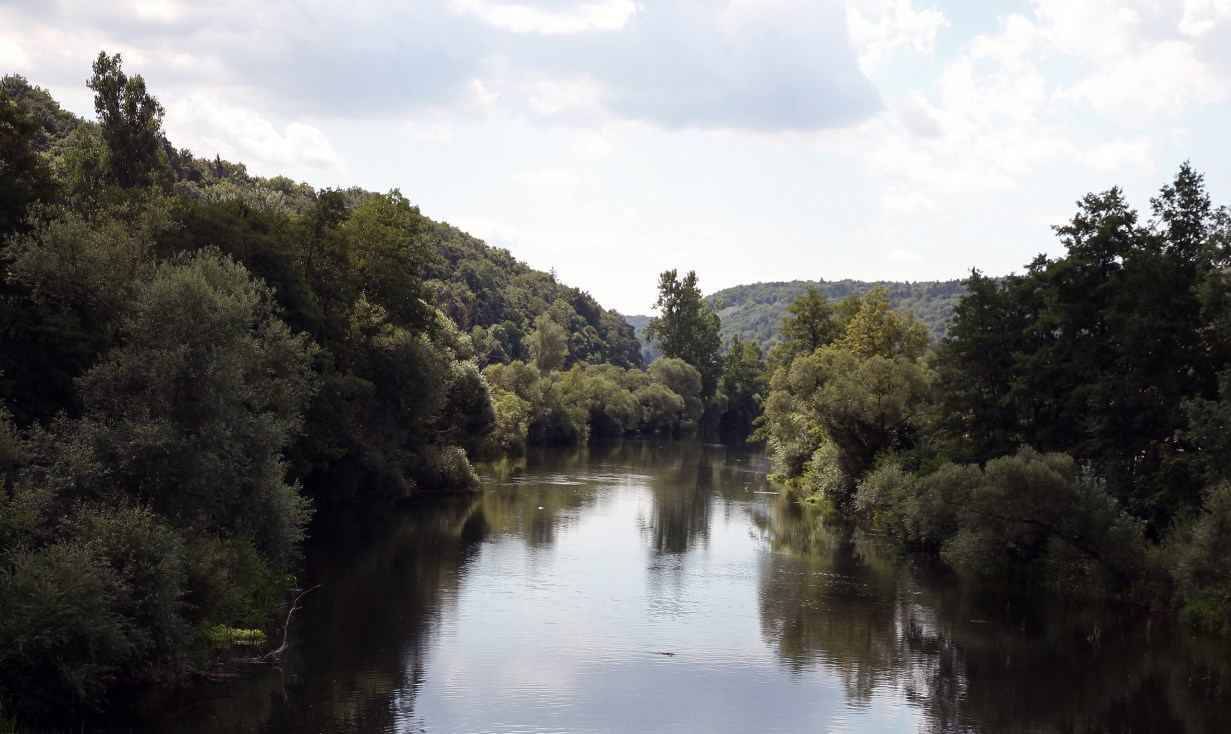
Old town of Regensburg with Stadtamhof (nr. 1155)
The medieval town of Regensburg is located at the Danube River. The high number of historical buildings (Roman, Romanesque and Gothic) of exceptional quality testify of the importance of this city as a central-European trading centre since the 9th century AD. The UNESCO world heritage property consists of the city centre, the area of the former charity hospital St Katharina in Stadtamhof and a number of islands in the Danube.

